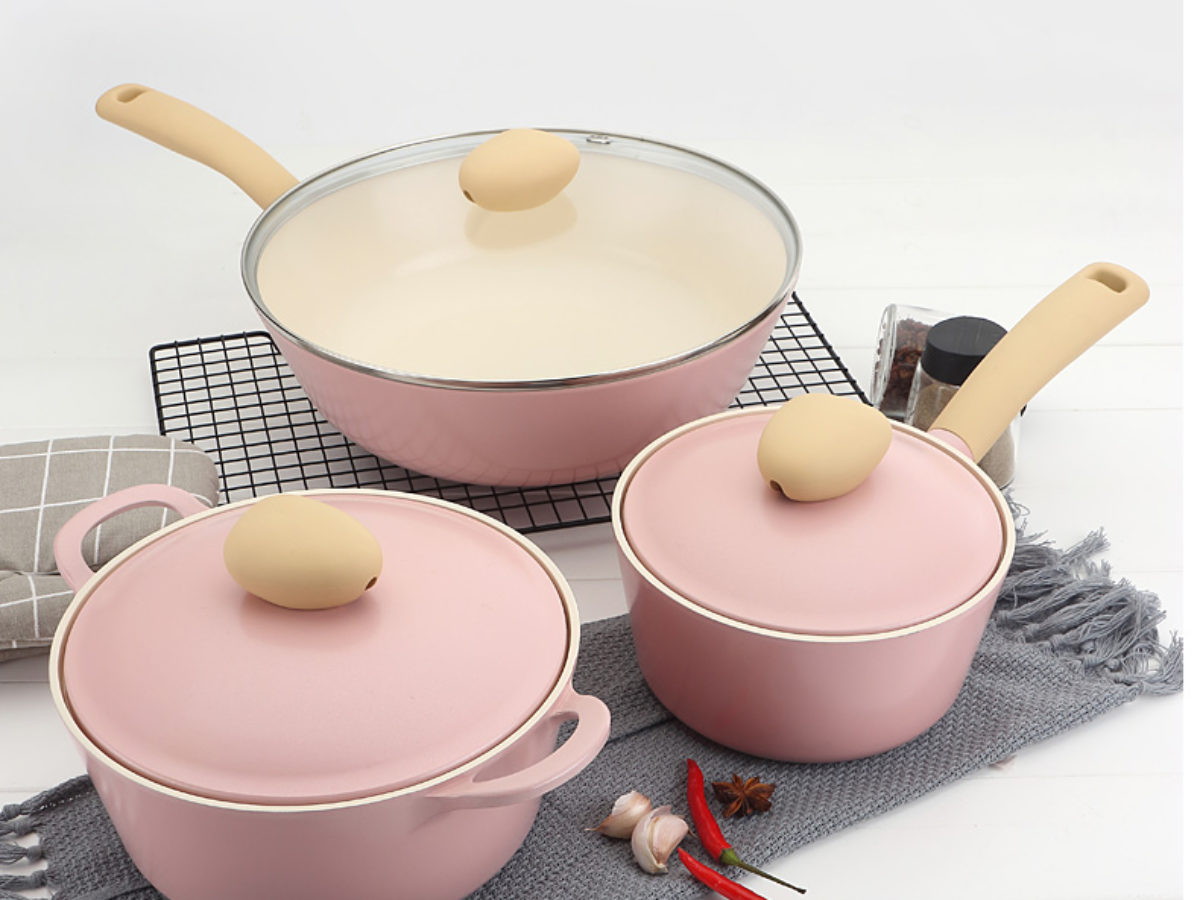 Like other kitchenware, ceramic pots and pans are still not immune to burns and stains. If you have no idea how to clean ceramic cookware, months of using it can lead to dirt and oil buildup.
Like other kitchenware, ceramic pots and pans are still not immune to burns and stains. If you have no idea how to clean ceramic cookware, months of using it can lead to dirt and oil buildup.
In this article, I will be demonstrating different ways to clean your cookware. The good thing about the tips mentioned here is that they are fast and easy to implement and are budget-friendly.
Why People Use Ceramic Cookware
Ceramic cookware is the most versatile appliance in your kitchen. It can handle heat. You can also use it in your oven without worrying about it getting damaged.
You can also place it inside the freezer for hours. Most ceramic kitchen items come with nonstick surfaces, making cooking easier.
As for health reasons, ceramics are toxin-free and environmentally friendly. You won’t have to worry about them emitting harmful substances that your family may take in.
It’s also aesthetically pleasing. Minimalism may be the current trend and other kitchenware may look sleek, but ceramics are colorful, brightening up your kitchen space.
Dealing with Burnt Areas
To get rid of the burnt food, pour in water enough to cover the spots you want to clean. Set the stove to medium-high heat.
Wait for the water to start simmering before sprinkling in the baking soda. Once you’re satisfied, let it simmer for a minute.
Using a wooden spatula, you can now gently scrape the pan. Avoid using steel spatulas as these can damage your cookware.
Rinse it in warm water and let it sit. Afterwards, you can see that even though you have already gotten rid of the large chunks of burnt food, there are still stubborn stains scattered all over.
To fix this, dampen the affected surfaces with water. Make a paste composed of three parts baking soda and one part water.
Start scrubbing the paste all over the cookware. Lastly, wash it with warm, soapy water and dry it as you usually would.
Saving the Nice Design
Sometimes, the underside comes with light colors. This is what I meant before about it being more colorful than other kitchenware.
However, lighter colors also mean that the stains will be more recognizable. You can solve this with the aid of the ever-trusted baking soda.
Just sprinkle the baking soda on the stains. You can then put a few pumps of your usual dishwashing liquid on your kitchenware.
After this, gently rub in circular motions the dishwashing liquid and baking soda together all over the ceramic until you won’t see any stains any longer
You can use a scrub brush if you want, but for minor stains, you can go with your hands. Once you’re satisfied with how it looks, run it under cold water and dry it off.
Salt as an Alternative
Salt is a good way to exfoliate the leftover stains on your ceramics. The rough texture of salt can help in the cleaning process.
Use any salt you have in your home. Pour it into the ceramic. Make sure the pan is slightly damp. With a dishwashing sponge, scrub the stubborn stains.
Once you’re contented with how it looks, rinse it off. You will then have a pan, which looks almost brand new.
Taking Care of your Ceramic Cookware
Of course, the best thing to do is to take good care of your cookware. Know exactly how to maintain its excellent condition, so you don’t have to go through the hassle of cleaning it up.
Remember to use low to medium heat. Since they can easily spread heat evenly, there will be no need to turn it up even more.
Avoid using metal utensils. Using them will make the ceramic more prone to scratches. This can also ruin its surface.
Lastly, avoid putting a hot ceramic pan in cold water. Let it cool completely or you may ruin its nonstick coating.
Conclusion
By knowing more on how to clean ceramic cookware, you will be extending the life of your ceramics. I hope this article was able to help you. Please do comment and share if it did!

